WEnRV travel news, products, and industry trends
What to Expect in the First Five Years of RV Ownership, Part 2
Two weeks ago, we looked at repairs related to recreational vehicles with a focus on those items that pertained to the house portion of the unit. But problems can also occur to components and systems that make up the vehicle chassis.
What to Look For
Many RV repair issues start with the chassis, which supports all the vehicle’s accessories, components, and rolling ground equipment. This includes a frame, towing tongue, axle(s), suspension assembly, leveling jacks, and possible battery and propane tank mount for a simple tent trailer rig. At the extreme end of the spectrum, a motorhome’s chassis may support multi-axles, a prime mover, transmission, complex suspension assemblies, vehicle braking systems, steering configuration equipment, and much, much more.
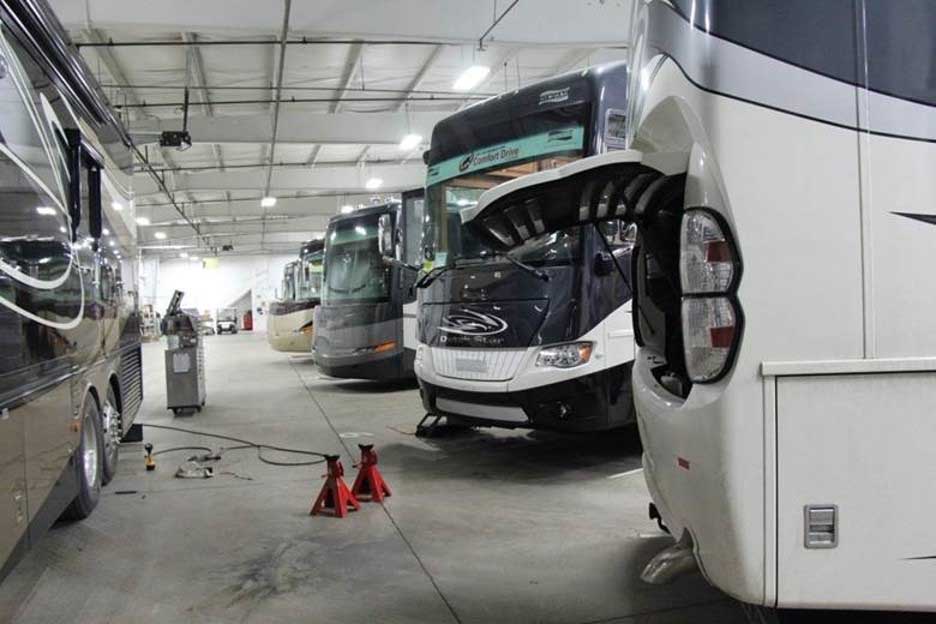
Photo: Peter Mercer
Needless to say, there can be a lot of components and complexity, depending on the RV type and model. When it comes to chassis repair, a simple trailer or smaller motorhome chassis can generally be serviced by most RV dealer service shops. However, some of the larger vehicles use custom-manufactured chassis such as Freightliner, Spartan, or Roadmaster. These may have specific warranties and services in addition to those of the coach builder.
Mind the Chassis (and Related Components)
So, what are some of the more common chassis-related issues that occur within the first five years of ownership?
Chassis Wheel Alignment. Realigning the wheels is something you will probably have checked and or done a couple of times within five years of ownership. As far as motorized RVs, this applies to the steering axle only. However, class A coaches should have all axles checked and corrected if needed.
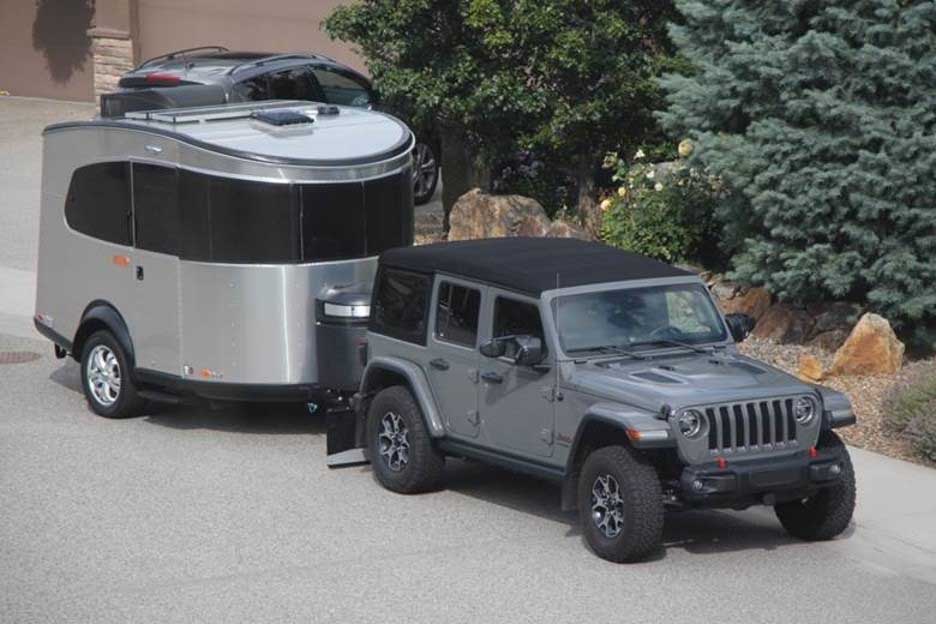
Photo: Peter Mercer
Flat Tire While Driving. Having a flat tire on your car can be time-consuming and perhaps will cost you the price of a new tire. Having a flat tire on an RV can be really costly. When a tire blows out, for example, the rubber distorts and flaps wildly. The light material that makes up the fender and the RV body is no match for the flailing loose tire. The fiberglass or like material is quickly destroyed around the failed tire. If this occurs, be prepared for some significant repair work.
Wheel Bearing Failure. This can happen on a tent trailer right up to a full-sized motor coach. If not caught and corrected, it can lead to serious issues. This issue is usually detected by a noise from the ailing wheel, oil or grease on both sides of the wheel, or during an inspection.
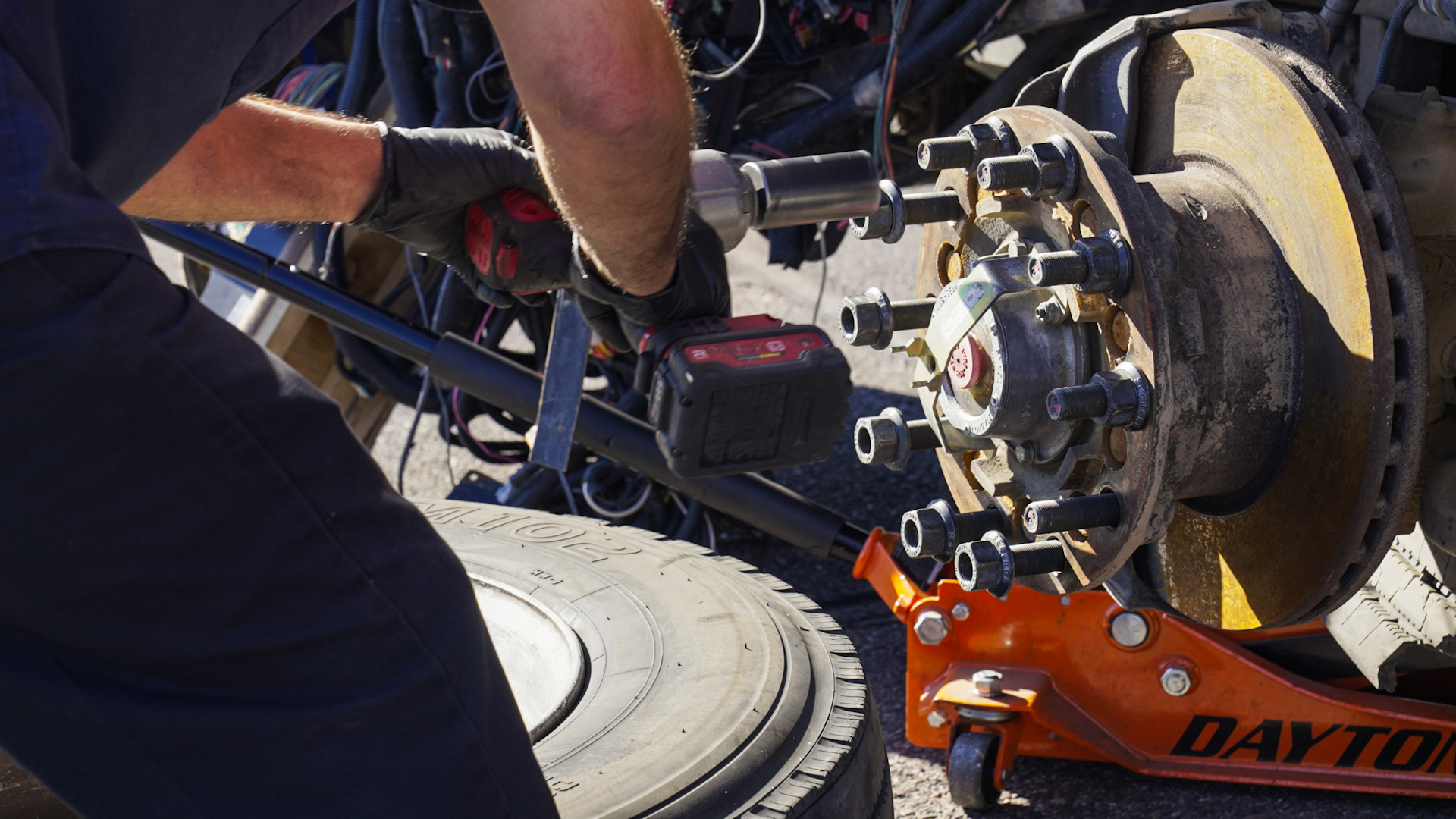
RV wheel repair. Photo courtesy of Camping World
Engine Cooling Issues. Whether you are towing a trailer or driving a motor coach, a build-up of heat in the engine and transmission is inevitable. In most cases, the motor and related heat exchangers manage the task of keeping the coolant temperature within the designed limits. But unlike an automobile, the RV application can be much more severe on the vehicle’s driveline due to its weight and possible body contour challenges. Overheating the cooling system can result in critical damage to the engine and transmission. Adhering to the recommended glycol type of your coolant and keeping up with the recommended testing and replacement schedule, as stated by the manufacturer, is a requirement.
Dash Air Conditioning Fails to Blow Cold Air. Take a look at the engine-mounted compressor and make sure it is engaging. The compressor is driven by a belt connected to an engine pulley with an electrically engaged clutch. For other than a missing or loose belt, shop service will be needed. This repair service can cost as little as $100 to over $1,000.
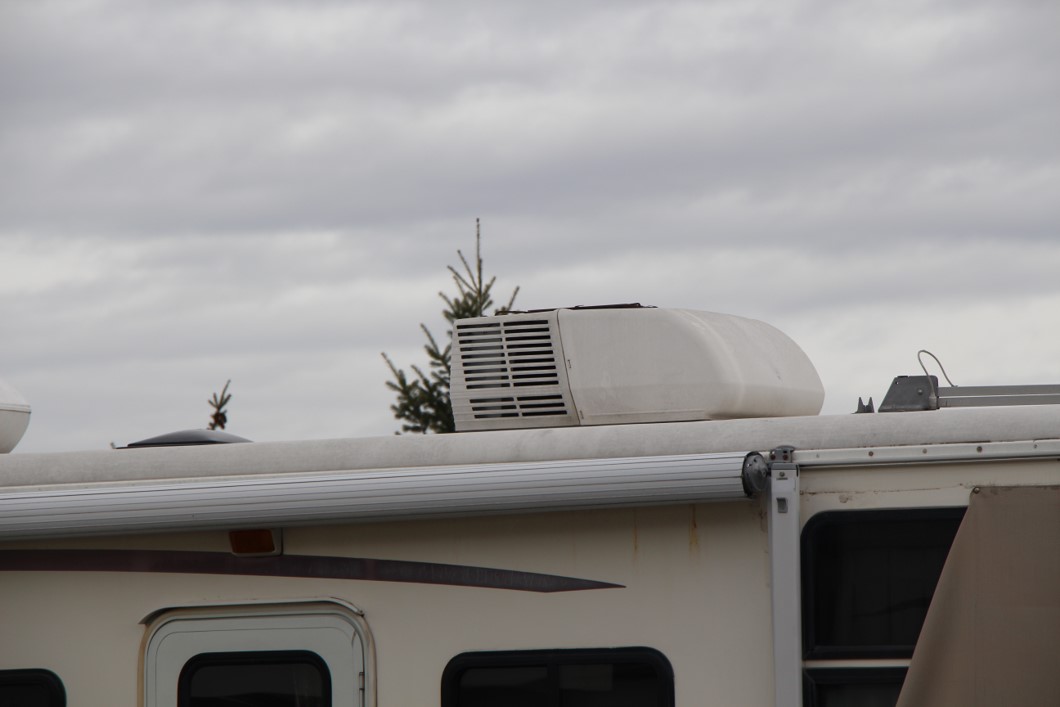
Roof AC unit. Photo: Peter Mercer
Roof Air Conditioner Stops Working. If your roof A/C unit starts and immediately shuts down, it is probably due to a failed capacitor. A service tech can quickly diagnose this issue and replace the faulty part. A/C units can fail due to low R134 gas caused by leakage in the system. Compressor failure can be costly to fix. Sometimes replacing the entire unit can save you money in the long run.
Hydraulic Leveling Jacks Fail to Operate or Retract. If the electric motor does not run when extending the jack, the most common problem is poor ground contact with the electric motor frame. Bridge a battery jumper cable from a good ground source to the electric motor mount frame. If a spring-retracted jack does not operate, manually depress the solenoid valves at the pump manifold. Either way, the fault will have to be serviced to function correctly. It may require just tightening the
mounting bolts. However, it may need a new solenoid valve, or even a hydraulic pump or motor assembly replacement.

Photo courtesy of Camping World
Transmission Troubles. The RV application can be quite stressful on the transmission. Excess heat can be generated during hot weather and or caused by steep-grade travel. The only cooling the transmission gets is from the engine’s coolant via a heat exchanger, which, of course, is also trying to shed the motor’s heat. To prevent failure, full, timely service should be carried out on the transmission. Changing the fluid regularly and inspecting for any signs of overheating damage is necessary. Burnt-smelling, discolored fluid is a sure indication of trouble. Filters and screens should be serviced also. Due to the somewhat severe demands that the transmission may be subject to, it may be wise to refill with a synthetic fluid, if it is not already required by the manufacturer.
Well, those are some of the issues that some RV owners face during the first five years of use. Some of these problems may occur at no fault of the owner.
Preventing Problems in the First Five Years
Of course, some problems can occur because of negligence or ignorance of necessary maintenance. Let’s look at some of the possible “oops!” events that could throw a monkey wrench into your travels.
Failure to Check and Correct Tire Pressures. Tire pressures drop over time because the air molecules within are small enough to pass through the tire’s casing. Low tire pressure causes excess heat while traveling, which can cause rapid air loss or blow-out. As mentioned before, the deflated tire can cause substantial damage to an RV’s fender and surrounding body before the vehicle can be stopped. While checking for inflation, always check for tread wear. The quarter test is a good exercise. Insert a quarter into the tire tread upside down, with Washington’s head going in first. If the top of George’s head is covered by the tread, your tires are OK — do this test at multiple points around each tire. If the top of his head is visible at any point around the tire, you need new tires.
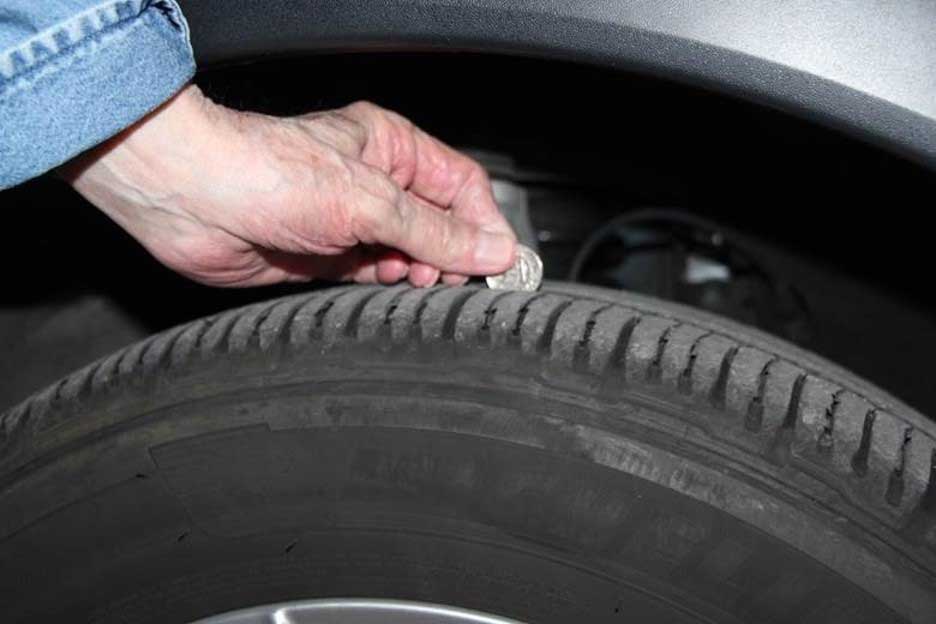
Tread quarter test. Photo: Peter Mercer
Unsteady Travel Trailer Weight and Balance. Whether it’s a travel trailer or a utility trailer, proper weight and balance are required on any bumper hitch towed vehicle. About 10% of the trailer’s gross weight must be on the hitch ball. Trailer manufacturers distribute the weight of the unit’s structure and furniture to accomplish this balance. However, when owners add items to various locations, like in storage space, all that can change. Excessive front loading can cause handling issues as well as possible hitch failure. Too much weight in the rear of the trailer can lead to dangerous highway handling.
Allowing Turbo Charger to Cool. Turbo charger-equipped motor homes or tow vehicles require some care during their operation. They must be allowed to idle briefly, two or three minutes, prior to shutdown after running hard. This allows the internal turbines and bearings to cool. Failure to do this may result in bearing surface damage.
Premature Generator Shutdown. Turning the generator off is as easy as flipping a switch. This is fine if the generator has only been run with a relatively low load. However, if it has been supporting a heavy load, like air conditioners, heating elements, or similar, it should be left to operate without any load for at least three minutes or so. Windings damage to the generator can be experienced if not allowed to cool somewhat prior to stopping.
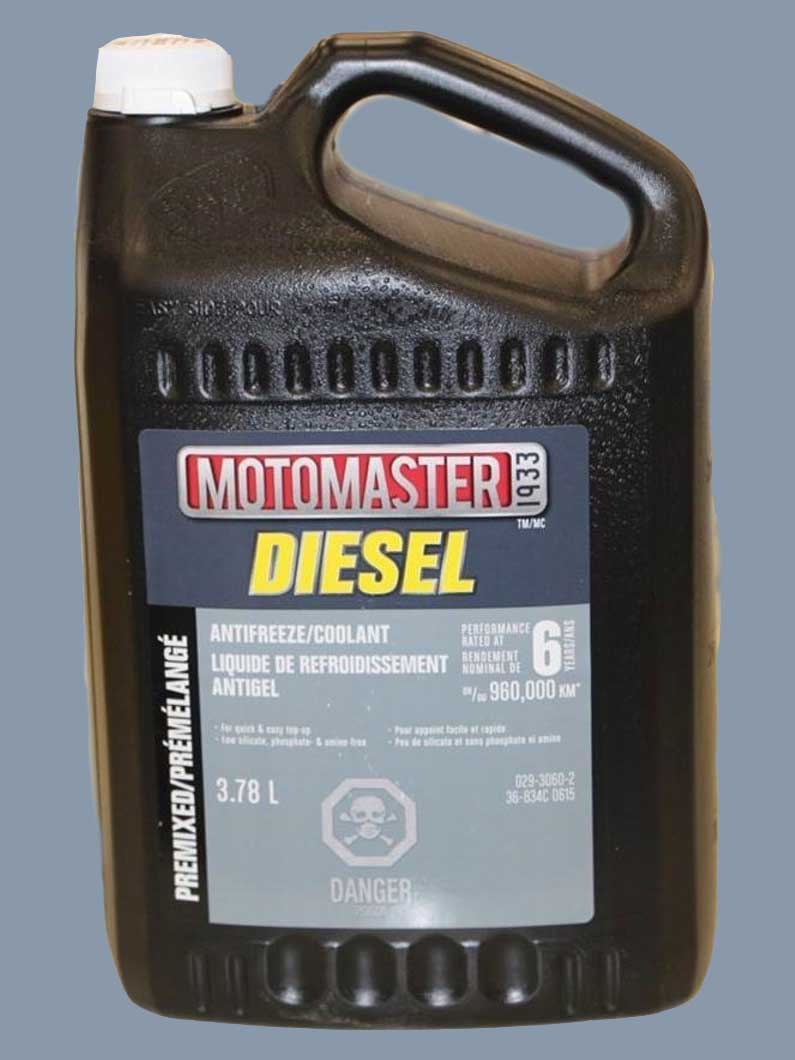
Photo: Peter Mercer
Using the Wrong Antifreeze. Never mix antifreeze types when topping up your RVs coolant. Mixing different glycol blends may cause gelling, reducing the circulation flow. If your RV is powered by a diesel engine, only use a glycol specifically made for sleeved cylindered diesel engines. This can not be overstressed. Failure to do so can lead to catastrophic engine failure. Major engine repair or entire motor replacement may result. Cost, $15,000 to $25,000 or more. (Non-sleeved diesel engine blocks are less susceptible to this phenomenon)*.
Well, these are just some of the things that can cost money to repair that could probably have been avoided. Whether you forgot or were unaware, the results are the same. The best practices to alleviate these mistakes are to read all the manuals and to seek a qualified service shop to do the jobs that you think may be beyond your scope.
Remember, preventative maintenance can reduce a lot of issues. Being familiar with the operation and functions of the various parts and components of your RV is a great aid. Actually, some of the troubleshooting and D.Y.I. projects can be both satisfying and fun.
To manage RV repair expenses, consider an extended service plan. This can ensure that when it comes to unexpected vehicle failures, you’ve got coverage.
Now it is time to hit the road. Enjoy and drive safe.
* Sleeved diesel engines require an additive in the coolant to prevent the forming of micro-bubbles that form on the outer side of the cylinder sleeves. This is caused by the harmonic vibrations from the operating engine. These bubble formations can cause corrosion of the outer sleeve material which can eventually fail.
Peter Mercer — With Money Well Spent
The post What to Expect in the First Five Years of RV Ownership, Part 2 appeared first on Good Sam Camping Blog.
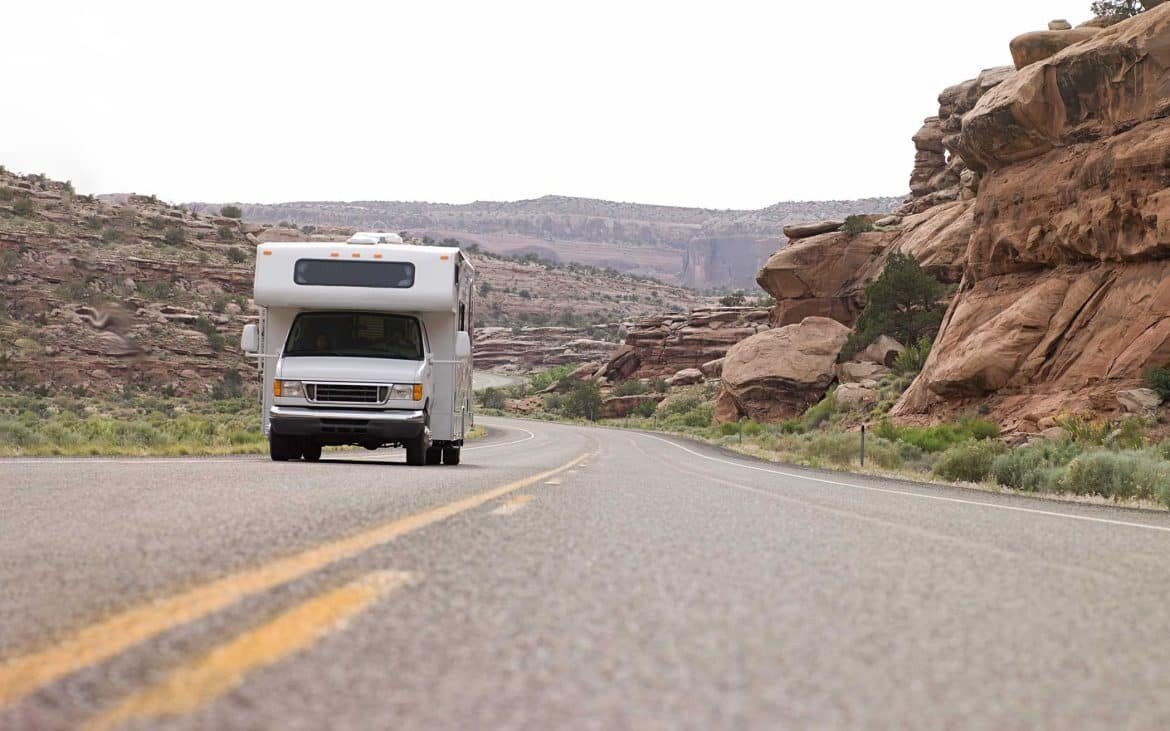
Copyright
© Good Sam Camping Blog


